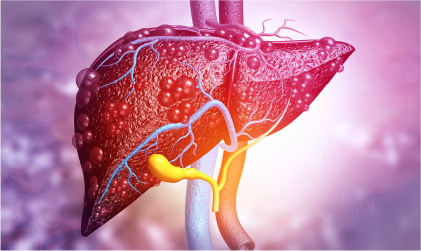Other strategies include use of non-invasive tools to pre-screen subjects to better predict those that are least likely to be suitable for the enrollment requirements of a clinical study and therefore should not proceed to a biopsy. There are a number of imaging tools and laboratory biomarkers that have a strong ability to predict steatosis and fibrosis, e.g., ultrasound in the case of the former and the Fibrosis-4 (FIB-4) score 15 in the case of the latter. The European Medicines Agency (EMA) has approved the ELF test for assessment of fibrosis. Both are based on multiple blood-borne biomarkers and work very well in identifying subjects who have cirrhosis (F4) and those who have no fibrosis (F0) but are not optimal for differentiating between intermediate stages of fibrosis e.g. F2 vs F3. While strong options exist to identify levels of steatosis and fibrosis, the same is currently not true for biomarkers that can accurately distinguish, with high accuracy, presence of NASH from absence. Some biomarkers, like cytokeratin-18 (CK-18) fragments, have reported levels of clinical accuracy of up to 80% which, while promising, is still not ideal. Noninvasive NASH biomarkers are an area of continued focus for the industry and an area of considerable unmet need.
Cardiometabolic Chronicle: What are the important NASH endpoints that are being evaluated in clinical trials? Dr. Roche: The current prevailing opinion is that a NASH therapy must demonstrate ability to prevent a liver transplantation in order to ensure reimbursement. As such, a key component that a candidate drug must address is fibrosis. NASH also includes other manifestations in addition to fibrosis, such as steatosis, inflammation, and ballooning, but ultimately it is fibrosis that determines the need for a liver transplant.


















